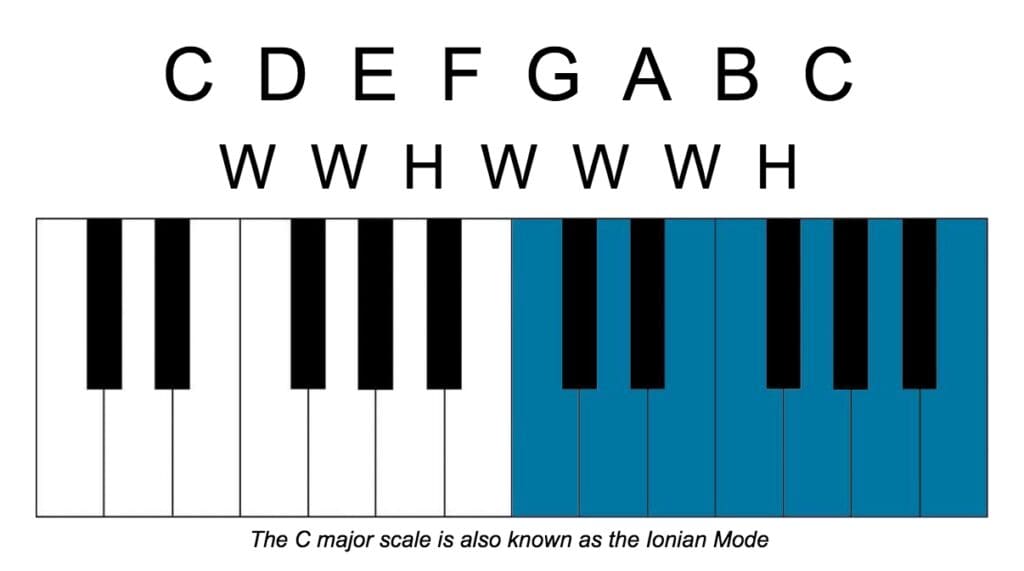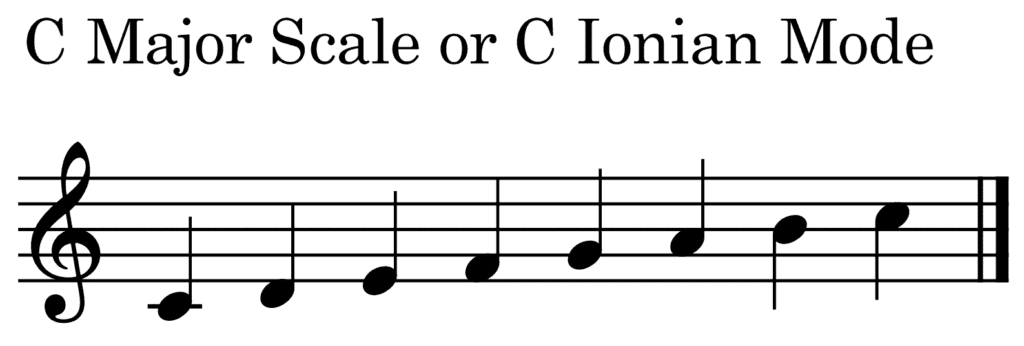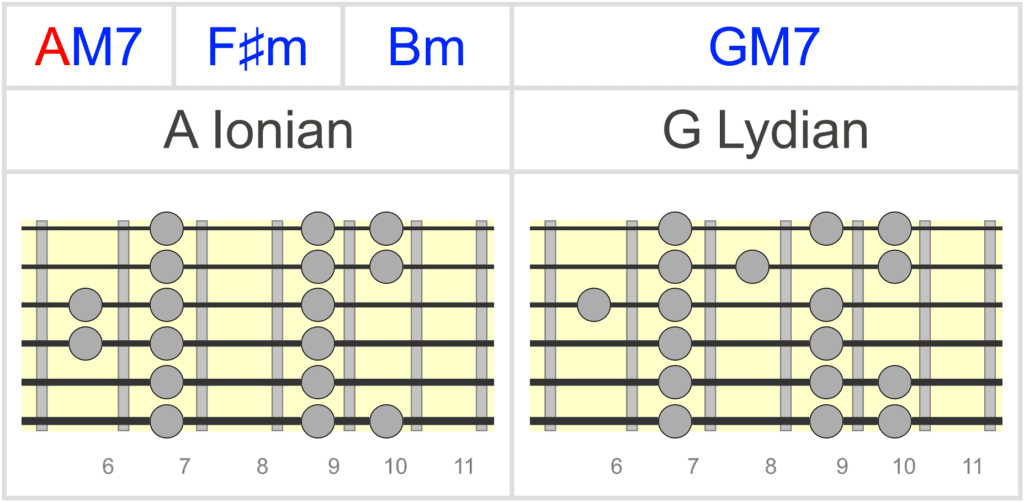Welcome music enthusiasts! If you have an interest in music theory and are curious about the Ionian scale, then you have come to the right place. In this article, we will delve into its fundamental aspects and examine its significance in the realm of music.
Join us as we embark on a journey to explore the intricacies of music theory and gain a deeper understanding of the Ionian mode and begin our exploration of the fascinating world of music.
What Is The Ionian Scale?

Also known as the Ionian mode or major scale, it is one of the most commonly used in Western music. It is a seven-note scale that consists of a specific pattern of whole and half steps. The pattern is W-W-H-W-W-W-H, where W represents a whole step (two frets on a guitar) and H represents a half step (one fret on a guitar).
To understand the Ionian scale, it’s important to first understand what a scale is. A scale is simply a collection of notes that are arranged in a specific order. The notes in a scale are chosen based on their relationship to a central note, called the root note. In the case of the Ionian scale, the root note is the first note of the scale.
It is often used in music because it has a bright, happy sound. It is commonly used in pop, rock, and country music, as well as in many other genres. One of the most famous examples of the Ionian scale is the melody of “Twinkle, Twinkle, Little Star.”To play it on a guitar or piano, start with the root note and play the pattern of whole and half steps until you reach the next octave.
For example, if you want to play the C Ionian scale on a guitar, you would start with the C note on the third fret of the A string and play the following notes: C-D-E-F-G-A-B-C
The Ionian mode is just one of many used in music, but it is an important one to understand.
By learning the Ionian scale, you can start to recognize its sound in the music you listen to and even begin to create your own melodies with it So, grab your instrument and start exploring the wonderful world of the Ionian scale!
What Are Modes in Music?

In music, modes are a type of scale that is derived from the major and natural minor scales. They are a way of organizing the notes of a scale and creating a unique sound or mood. Modes are characterized by their unique intervals and patterns of whole and half steps.
There are seven modes in music, each with its own unique sound and character. They are:
1. Ionian mode (major scale)
2. Dorian mode
3. Phrygian mode
4. Lydian mode
5. Mixolydian mode
6. Aeolian mode (natural minor scale)
7. Locrian mode
Each mode has a different set of intervals and a unique sound that can be used to create different moods and emotions in music. Understanding modes is important for musicians and composers because they provide a way to add variety and complexity to their music.
Degrees of The Ionian Mode
The Ionian mode, also known as the major scale, has seven degrees. These degrees are represented by the notes of the scale and are numbered 1 through 7. The degrees of the Ionian mode are as follows:
1. Tonic
2. Supertonic
3. Mediant
4. Subdominant
5. Dominant
6. Submedian
7. Leading tone (or leading note)
Learning The Ionian Scale
The Ionian mode is often the first scale that beginners learn when starting to play an instrument or studying music theory. It is a seven-note scale that is made up of a specific pattern of whole and half steps. As mentioned previously, the pattern for the Ionian mode is W-W-H-W-W-W-H, where “W” represents a whole step and “H” represents a half step. For example, if we start on the note C and follow the pattern, we get the notes C-D-E-F-G-A-B-C, which is the C Ionian scale.
To learn the Ionian scale, beginners should start by memorizing the pattern of whole and half steps. Once they have memorized the pattern, they can apply it to any note to create the Ionian mode for that note. For example, to create the G Ionian scale, they would start on the note G and follow the pattern of whole and half steps: G-A-B-C-D-E-F#-G.

Learning to Play
Beginners can also practice playing it on their instrument, for example, on the piano, they can start with the C Ionian scale and play each note in sequence. They can then practice playing the scale in different keys, starting with the white keys and then adding the black keys as they become more comfortable.
Another way for beginners to learn the Ionian scale is to practice playing it in different ways. For example, they can play the scale in different rhythms or play it in different octaves. They can also practice playing the scale starting on different notes within the scale, such as starting on the third or fifth note.
Learning the Ionian scale is an important first step in studying music theory and playing an instrument. By understanding the pattern of whole and half steps and practising playing the scale, beginners can develop their musical skills and gain a deeper appreciation for the beauty of music.
Famous Songs That Use The Ionian Scale
Many famous songs have been written using the Ionian scale, and these songs span a wide range of genres and time periods. For example, “Happy Birthday to You” and “Twinkle, Twinkle, Little Star” are both children’s songs that use the Ionian s mode. “Somewhere Over the Rainbow” is a classic ballad from the 1930s that also uses it.
Moving on to more contemporary examples, “Don’t Stop Believin'” by Journey is a classic rock anthem that uses the Ionian scale. “Let It Be” by The Beatles is another iconic song that uses this scale.
And of course, there are many pop ballads that use the Ionian scale, such as “I Will Always Love You” by Whitney Houston and “My Heart Will Go On” by Celine Dion.
Closing Thoughts On The Ionian Scale
In conclusion, the Ionian scale is an essential component of Western music, and its influence can be heard in countless musical genres. Whether you’re a musician looking to expand your knowledge of theory or simply a music lover interested in understanding the building blocks of your favorite songs, the Ionian scale is a fascinating subject to explore.
By understanding the structure and sound of this scale, you can gain a deeper appreciation for the art of music and the creative process behind it. So take some time to study the Ionian scale and see how it can enhance your musical experience.









